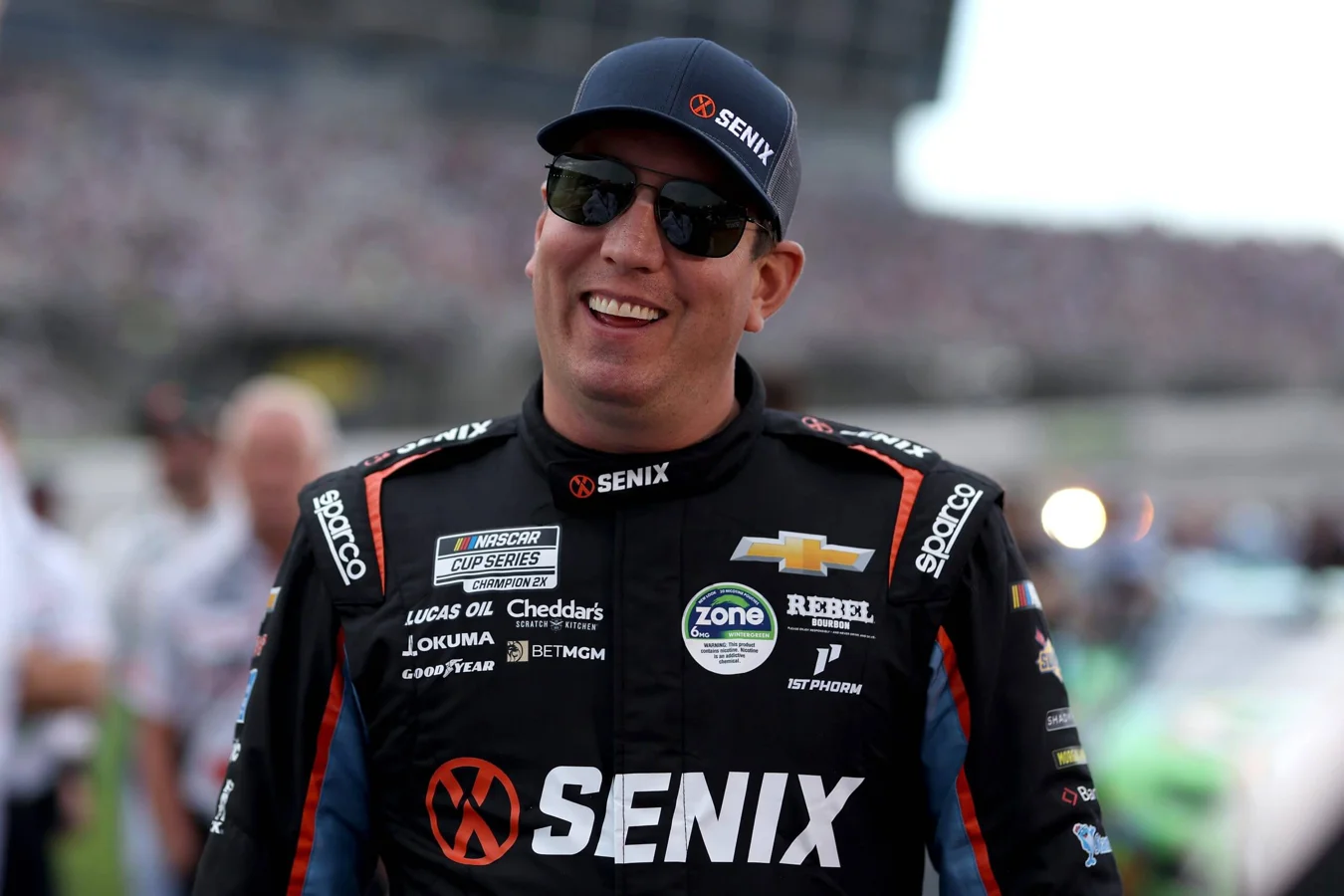Kyle Busch on NASCAR’s declining popularity has become a focal point following the two-time Cup Series champion’s candid criticism of the sport’s current direction. Speaking recently, Busch argued that NASCAR’s efforts to enhance safety have removed the unpredictability and danger that once captivated fans, leading to dwindling viewership and an alarming departure of dedicated supporters.
Busch’s Perspective on NASCAR’s Lost Edge
During an interview, Busch reflected on how the sport’s transformation has altered its appeal, suggesting that a riskier era once defined NASCAR.
Now it seems like everything is neutered,
—Kyle Busch, Champion. His comments underscore a perception that racing has become too sanitized, stripping away the sense of danger that kept audiences engaged.
Busch’s critique is not abstract; it draws from personal experience. In 2015, he suffered a severe crash at Daytona, hitting a concrete wall at 90 mph and sustaining both a compound fracture in his right leg and a broken left foot. This firsthand encounter with NASCAR’s hazards allows him a unique perspective on the consequences of increased safety.
He reflected further on the unpredictable nature of past races, noting the allure it once held for fans.
I got hurt in 2015, so I can talk, but nobody really gets hurt. The safety aspect isn’t there. So there’s not this Evel Knievel type thing happening anymore. It’s just going to watch a race on Sunday, and people feel like that’s boring.
—Kyle Busch, Champion.
Busch continued to highlight a key element of the sport’s former appeal: the tension surrounding crashes and the potential for serious outcomes.
A little bit of it, too, was back in that day, guys were getting hurt, the speeds were getting faster, cars were getting a little bit safer, obviously we lost Dale, but there was this sense of ‘What are these guys going to do next? What’s this next crash going to look like? Are they going to come out of it OK?’
—Kyle Busch, Champion.
Statistics reinforce Busch’s concerns. So far, viewership for the 2025 Cup Series has averaged 2.71 million per race, compared with 3.07 million in 2024—an approximately 11-14% decline. Despite aggressive media deals and expanded digital content, NASCAR has failed to reverse this downward trend, highlighting a shift in audience behavior.
Cultural Shifts and NASCAR’s Identity Crisis
Busch attributes NASCAR’s struggles to broader social changes, arguing that the sport’s challenges extend beyond safety modifications.
I think it’s a culture problem, and I say that in regard to the world culture,
—Kyle Busch, Champion. According to Busch, the culture that once fueled NASCAR’s growth—dominated by hot rod enthusiasts and gearheads—has faded, with many longtime supporters aging out of the sport.
He recounted the decline of a key demographic from the sport’s heyday.
In the ’80s and ’90s, you had a bunch of Hot Rod guys who were cool with souping up their 1970s, 1980s street rods. A lot of those guys are aged out.
—Kyle Busch, Champion.
Busch described how entertainment options have multiplied, luring fans away from Sunday races.
I just think the problem we’re running into is there’s not a lot of race fans anymore,
—Kyle Busch, Champion. By highlighting activities like taking kids to lakes or bounce houses, Busch pointed to a generation less interested in cars or motorsports, making it harder for NASCAR to attract young families.
He elaborated on these pressures, saying,
People would always bring their kids to the track, but now there are just so many other things people can do otherwise. Going to the lake, taking your kids to a bounce house.
—Kyle Busch, Champion. This change in leisure preferences has fractured the once-loyal audience, creating an identity crisis for NASCAR as it competes with a crowded entertainment landscape.
The cultural divide is further emphasized by the rise of Formula 1, which in recent years has narrowed the gap in U.S. viewership, posing an even stiffer challenge for NASCAR in reclaiming its former dominance.
Why Busch’s Critique Matters Now
Kyle Busch’s comments highlight the urgency with which NASCAR must confront its evolving identity. His observations point to a complex blend of increased safety, cultural shifts, and shifting entertainment habits that have contributed to the sport’s declining popularity. As longtime enthusiasts age out and new generations find excitement elsewhere, NASCAR faces mounting pressure to rediscover what made it a staple of American motorsport. Whether the organization will respond by recapturing the raw thrill that once defined its races or find inspiration in today’s entertainment realities remains uncertain, but the conversation sparked by Busch is unlikely to fade any time soon.
